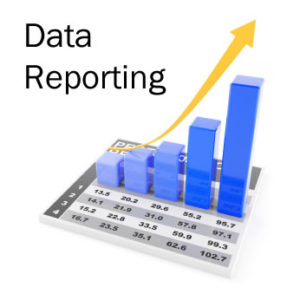This is the fourth and final post in a series in which I implore nonprofits to do some critical reflecting and planning before you embark on any evaluation work or make changes to your data collection forms, tools, or processes.
I think there are four key things organizations need to know when planning their evaluation and data management work.
- Know Your Programs
- Know Your Data
- Know What You Want to Know
- Know What Your Stakeholders Need
In this post, I’m tackling #4.
 This post might be short, because nonprofits are all too conditioned to know and respond to their external stakeholders’ needs and requirements. Nonprofits often bend themselves into pretzels to qualify for and keep funding, and they often add layers upon layers of measurement and data collection in order to satisfy funder reporting requirements. So, I don’t need to tell you how important it is to understand your stakeholders’ requirements for data and evaluation. Instead, I’ll focus on how to manage those requirements in efficient and effective ways.
This post might be short, because nonprofits are all too conditioned to know and respond to their external stakeholders’ needs and requirements. Nonprofits often bend themselves into pretzels to qualify for and keep funding, and they often add layers upon layers of measurement and data collection in order to satisfy funder reporting requirements. So, I don’t need to tell you how important it is to understand your stakeholders’ requirements for data and evaluation. Instead, I’ll focus on how to manage those requirements in efficient and effective ways.
Be Pro-Active
My first tip is to plan ahead. Don’t ignore these requirements until the week before the report is due! (You know who you are!) Before you apply for a grant, find out what the reporting requirements are. Ask to see the report template. Then, determine if you even have the capacity to collect and report the data necessary to satisfy this funder. If so, pass “Go” and hopefully collect more than $200. If not, be honest with yourself and with the funder up front.
Getting Organized
My next tip is to organize and align your stakeholders’ requirements. By stakeholders, I mean your Board, accrediting body, funders’ and leaders. Know what each of them wants to know about each component of your program. Including:
- who you serve (population),
- what resources you used (inputs) what you delivered (activities),
- how much you delivered (outputs),
- and what difference it made (outcomes).
Consolidate those requirements in a handy-dandy tool, and you’ll never again have to go digging through individual grants and policies to find them. Check out this post for some specific suggestions and a sample tool.
Slicing & Dicing
Nonprofits are often able to identify the data they need to collect for their reporting, but they often struggle to know how to collect it in ways that will allow them to aggregate, segment, query, and export it in the ways necessary to answer specific stakeholder questions. In other words, organizations often get hung up when they have to “slice and dice” their data in order to answer funders’ specific questions about what happened, when, to whom, and how.
Funder reporting will often require you to segment your data according to one or more of the following:
- Service dates (enrollment, service delivery, discharge, etc.)
- Client population subsets (age ranges, geography, other eligibility criteria)
- Level of participation (those who received a significant dose of or completed the program)
This requires that you store your data in a relational way. This means that your data describing clients, utilization, and outcomes need to be able interact with one another. (You will struggle to create reports if these three sets of data are stored separately!) These types of reporting requirements essentially become the filters you use to pull data for your report.
So, beyond just listing your promised outcomes, be sure you know whose outcomes and for which time periods you need to report.
The Bottom Line
This entire series has been driving at one point: investing time in reflection and planning before buying, building, or revising any data collection tool or process will ensure that you get the most value out of your efforts with the least amount of frustration. I hate wasted time and resources, and I know you do too, so don’t let your evaluation efforts go to waste because of poor planning!
